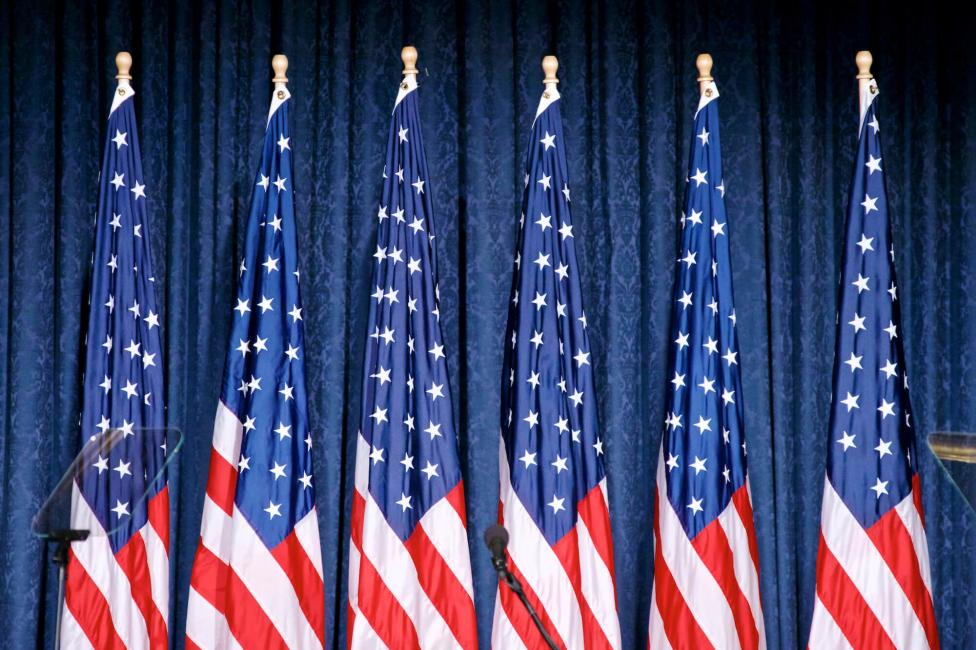US Rolls Up Welcome Mat for International Travel

Trump tariffs set to raise effective rate above 1930s levels.
Apr. 3, 2025
Author’s Note: President Trump's April 2 announcement of Liberation Day tariff hikes surpasses the assumptions used in our March 27 release—referenced below. The announcement reflects an even more aggressive approach to trade policy and international relations, underscoring the potential that the negative impacts on US inbound travel may be worse than anticipated in this update.
During a wave of uncertainty, one thing is evident—Trump’s policies and pronouncements have produced a negative sentiment shift toward the US among international travelers. The correlating decline in international travel to the US is expected to be strongest in 2025, with persisting degrees of impact throughout the remainder of Trump’s second term.
The US travel sector faces a mix of headwinds: 1) negative sentiment, 2) border and immigration policies and uncertainty, 3) reduced competitiveness with a strong dollar, 4) economic slowing in Canada and Mexico, 5) hasty efforts at government efficiency, and now 6) uncertainty on the domestic economy.
Charged by these challenges, Tourism Economics’ latest Global Travel Service update includes a stark downgrade for inbound international to the US:
- We now expect a 9.4% decline in international visitor arrivals for 2025, led by a 20.2% decline in visitation from Canada.
- We forecast international visitor spending in the US to decline 5.0%, a loss of $9.0 billion in spending this year alone.
- This loss includes $6.4 billion of decreased spending in destinations, plus $2.5 billion of lost transportation spending.
- In December 2024, the forecast called for an 8.8% growth in international visitation, with a 16.0% increase in visitor spending. In comparison, this updated outlook represents a substantial setback with the full recovery of international visits to the US pushed out to 2029.
Leisure travelers have options, and negative shifts in sentiment toward the US are expected to adversely impact its global market share, resulting in a 1.5 percentage point market share loss by 2026. Access the full research briefing here.
Running the Tariff Numbers
On April 2, President Trump announced a sweeping set of tariffs, imposing a minimum 10% rate on all countries, with some reaching significantly higher levels. Our initial assessment indicates that these tariffs will elevate the effective US tariff rate to nearly 30%, surpassing levels seen in the 1930s and exceeding projections from our original full-blown Trump scenario.
Oxford Economics simulated the “Liberation Day” tariff proposals to quantify the economic impact. Results show US GDP growth slowing to 1.4% (down from 2.0%), with core inflation rising to 3.9% this year, compared to 3.1% in the baseline. The US avoids a recession but remains highly vulnerable.
While this scenario assumes 10% tariffs on the EU and a continued USMCA exemption for Canada and Mexico—mitigating some economic fallout—it does not account for potential retaliation or heightened uncertainty, both of which may intensify the damaging effects of tariffs.
If these tariffs remain in place as announced, the risk of a recession within the next 12 months increases for three key reasons:
- Inflation will rise beyond previous estimates, eroding real disposable income and suppressing consumer spending.
- Financial market conditions will likely tighten, and potential equity declines could dampen spending through the wealth effect.
- Persistent trade policy uncertainty will weigh on business investment in equipment, nonresidential structures, and private hiring.
The Liberation Day tariff announcements, if fully implemented, stand to send advanced economies back into industrial recession just as they were set to return to growth. Rising uncertainty and reduced investment will only reinforce these trends.
Waves of Uncertainty
The announcement leaves more questions than answers. It remains unclear whether these tariffs set a ceiling, whether rates could climb higher, or how long they will stay in place. The 10% across-the-board tariffs take effect April 3, while higher reciprocal rates face a delay until April 9, leaving room for modifications and potential exemptions. This could mark the start of extensive negotiations between the Trump administration and trading partners. Legal challenges may also emerge. The administration’s broader goals remain unclear—whether to raise revenue, fund the fiscal package, or re-shore manufacturing.
Ongoing Evaluation
Oxford Economics and Tourism Economics continue to refine projections as additional details emerge, including potential foreign retaliation, trade policy adjustments, and industry sector effects. Stay tuned for further insights on the evolving economic impact.
Media Contacts:
Julio Urdaneta | jurdaneta@oxfordeconomics.com
Geena Bevenour | gbevenour@oxfordeconomics.com
Learn More About:
Business Intelligence Platforms >